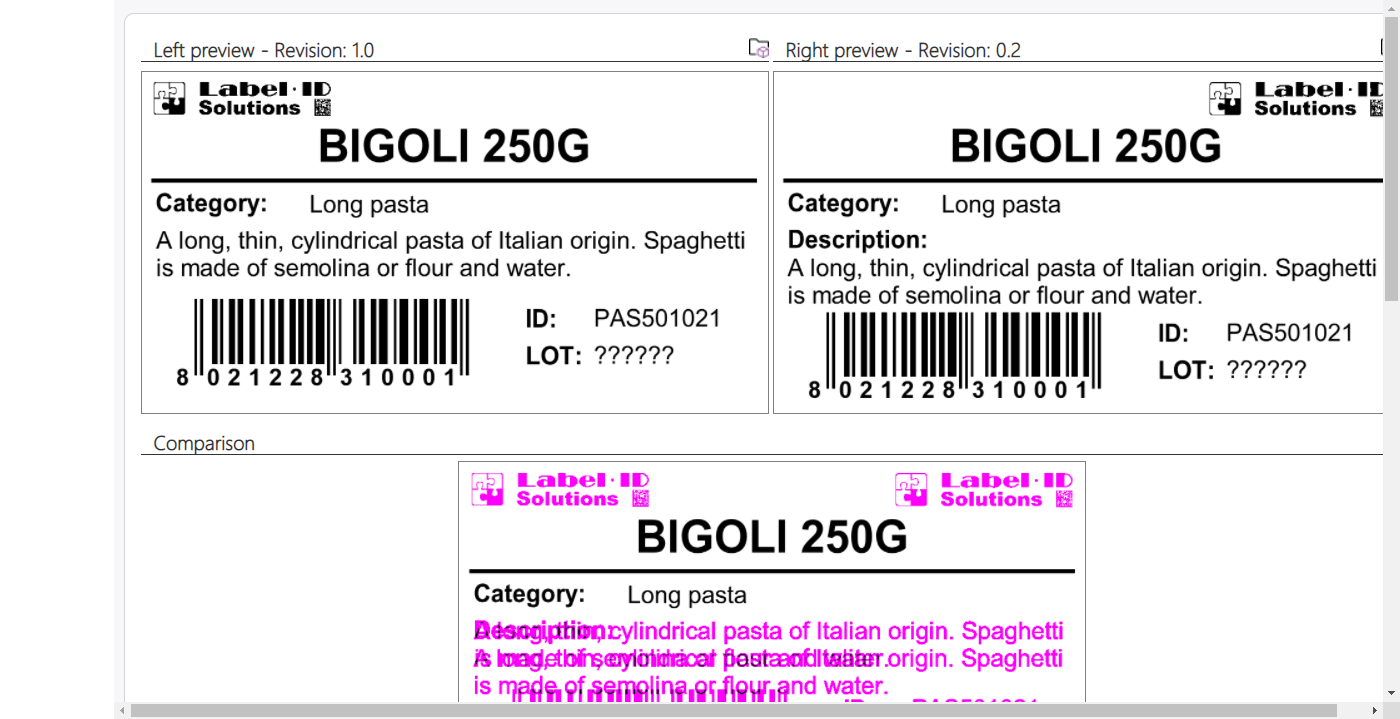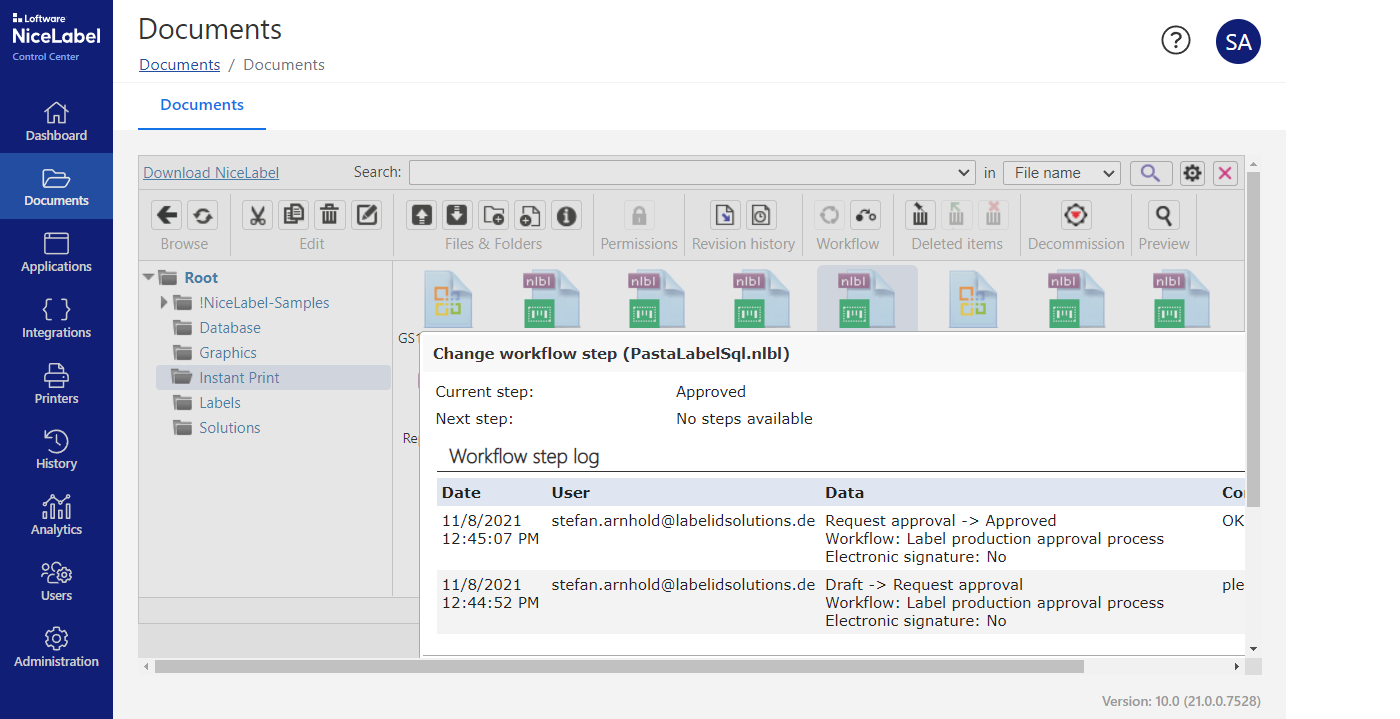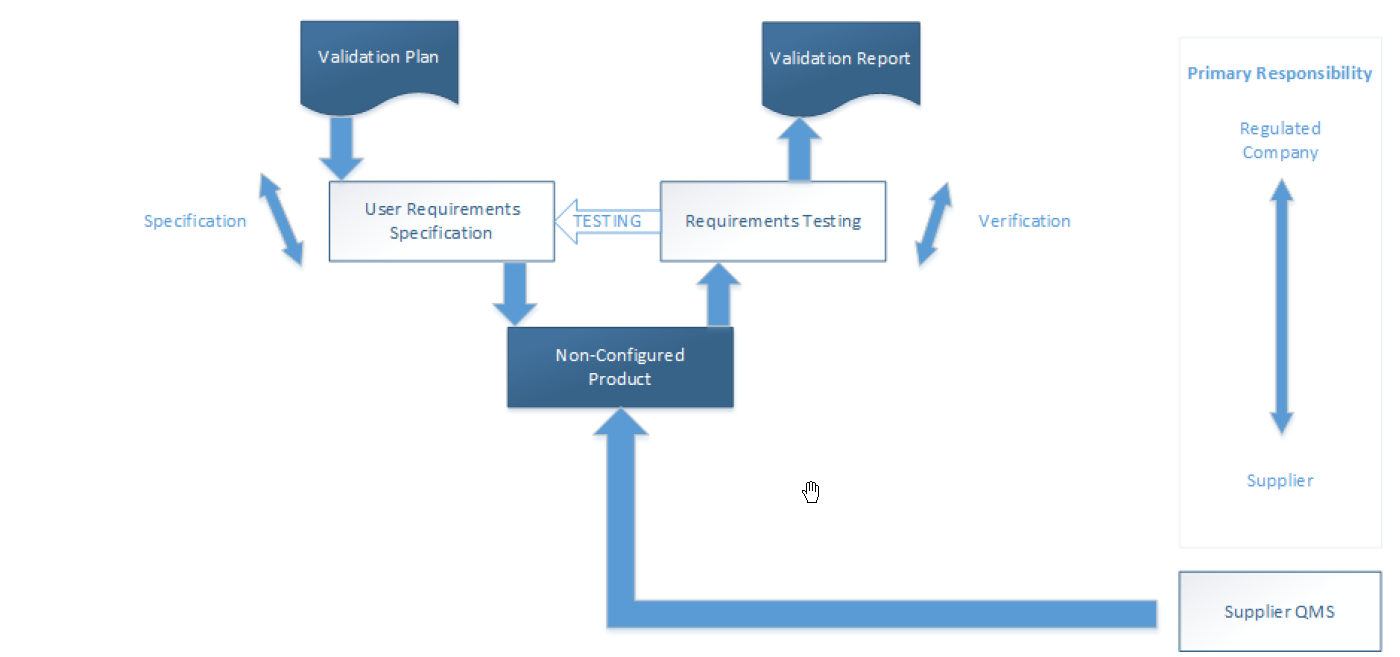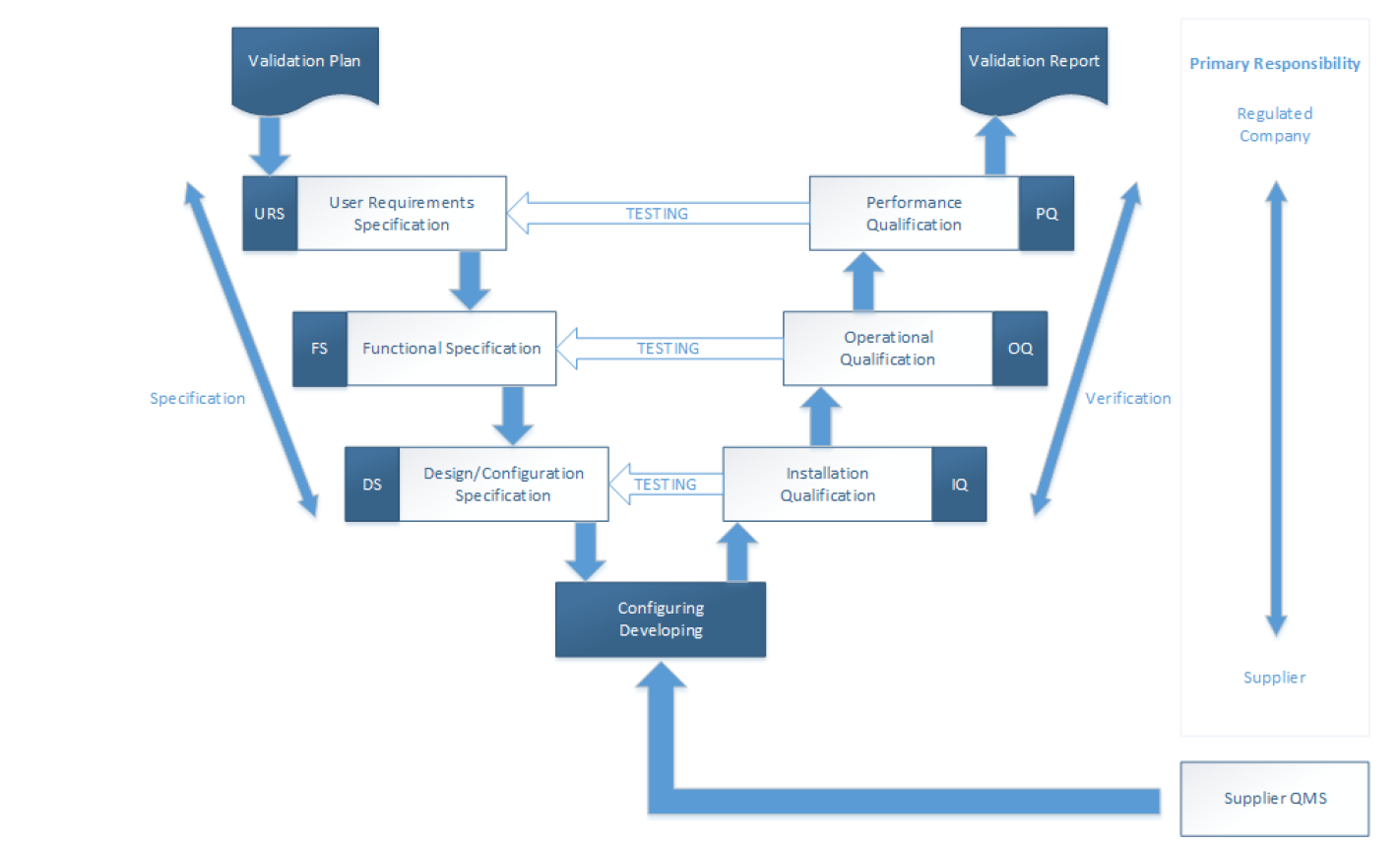
Version management for documents
While version control is a useful extension for product labeling, it is a mandatory part for regulated companies. All modifications to documents must always generate a new version and only the last approved version should be available for printing in production.
An important part of the version control is correct access rights for persons or groups. In addition to approving documents, these are also important when deactivating and downgrading documents.
Differences in detail
In the workflow for approval of documents, it is often not easy to see only small modifications. This includes adjustments in font sizes, changes in positioning or content of barcodes. Sometimes the information in the approval request is not detailed enough to figure out what to compare.
The function for a visual version comparison of Loftware documents is a very useful feature. The versions to compare can be selected and the differences are highlighted in the comparison view.


Workflow status in documents
Depending on the selected workflow, different steps needs to be done to approve a document. The current status can be shown directly in the document itself, including the previous steps. This also applies to documents that have already been approved in order to get an overview of the approval process.
Additional the label report offers more detailed information on changes in the layout. It gives access to the print preview and general data on the layout as well as workflow steps that have been done before. In order to evaluate field content, extended information such as font size, font, barcode type or picture name is available for all field types (text, images and barcodes).
The advantage of standard software
For software that can be configured, but is used in its standard configuration without adapted to specific business processes, there is GAMP Category 3 with simplified validation. If this is the case in the cloud solution or LMS version, there is the Validation Acceleration Pack with ready-made templates to support the validation as standard software.
It is important that the modules such as PowerForms or Integration and Automation are almost always tailored to specific business processes. In this case, category 3 quickly becomes category 4 with considerably more effort in the system validation.


Validation via Professional Service Group
For the LMS and Cloud solutions that require validation, there is usually already a team that is familiar with the validation of business processes. Our Professional Service Group can provide support in such cases and rely on experience from previous validations. This can significantly reduce the amount of work involved in such tasks.
Even if companies want to pass on a larger part of the validation or even the complete preparation for a validation audit to the Professional Service Group, we would be happy to discuss this in a meeting.
Process validation in regulated companies
To ensure product quality, regulated companies have to comply with many complex specifications from national or international standards, laws and guidelines. The choice of software plays a major role and has a significant impact on the validation effort and the associated costs. The GAMP-V model is an established procedure for software validation in several project phases.
The validation plan for an IT system is mandatory and defines the user requirements (URS). The identification and description of technical requirements is defined in the functional specification (FS) and implementation is specified in the design specification (DS). Once the system has been coded, it is installed and configured according to the installation plan (IQ). A basic acceptance test with test data will be done (OQ) and after successful completion, the final function and acceptance test is approved with productive data. All these steps are checked against each other and documented in detail, which represents a large part of time and cost.


For cloud solutions we work exclusively with our partner Loftware and their Loftware Cloud products. This belongs to the various cloud subscriptions and also the local Label Management Software products.

